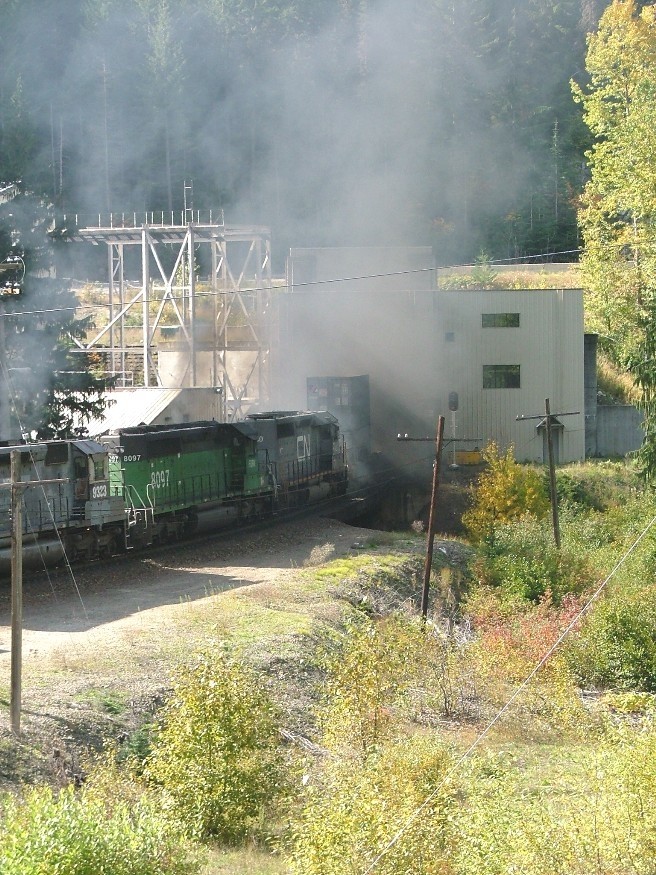Steve,
Here’s how the tunnel works and why it has a limited capacity. A EB train takes 20minutes to travel through the tunnel at track speed (20mph). If for any reason the EB train can’t do 20 mph (tonnage, lack of hpt, overheating motors, etc) it takes anywhere from 30-40 minutes. If the lineup is working correct and a WB is heading up the hill, the dispatcher will hold the WB at Berne or Merritt for the EB. Then after the EB has cleared the E. portal, the door is closed and the two fans are turned on for 10-15 minutes depending on how many trains are waiting at Scenic… The WB then pulls through the tunnel downgrade, pushing the dirty air from the EB out ahead (the WB train acts like a plunger, one fan on). The trick on an WB train is not to go 20 mph through the tunnel as you’ll run out of clean air and catch up to the dirty air. The fans blow the air WB at 16-18mph. When the tail end of the WB train is inside the tunnel, the door is closed, and both fans are turned back on, thus pushing the dirty/clean air from the EB train (and the WB train) out the W. portal.
So the EB takes 20-25 minutes to get through the tunnel. Once the EB clears the W portal, both fans remain on for 20 minutes to continue the flush. Many dispatchers will “cheat” by turning on the fan signal after only 10 minutes… Crews know better and wait the full 20 minutes. So now the second EB train is waiting at Scenic by now, and after 20 minutes after the WB clears Scenic, the second EB train starts pulling. At this time, the dispatcher will turn off one fan, and keep the other fan on, with the door closed. As the train approaches the E. Portal, about 2000’-2500’ from the portal the door automatically opens (your ears pop normally) and the EB train exits, pushing a small amount of dirty air E, but a majority of the air is still traveling W.
Rinse, wash, and repeat! A lot of the times the WB or EB trains will be stacked up one after another and this cycle is messed up even more. When two EB trains go through the tunnel with no WB following it takes a good 30-40 minutes to flush the tunnel. Not once did I go through the tunnel and felt that I was breathing ‘clean air’. It was full of fumes even after the flushes. The few times I deadheaded on Amtrak, I could smell the soot, etc inside the Amtrak cars…
(As a side note the company provides SCBA’s for employees to “use” in the tunnel if they want. Problem is this, the average SCBA tank only lasts for 15-20 minutes, transit time in the tunnel is at least 20… Secondly spare tanks are located every 1500’-2000’ (one tank!) So if you where to use your air in a non-emergency you would most likely run out of air before you made it out of the tunnel. Then if something happened (loco shut down, needed to be restarted, heaven forbid the trainline dumped and you had to walk in the tunnel) you wouldn’t have enough air to make it to the closest spare tank… The Cascade Tunnel (and I’m guessing the Flathead Tunnel) is the only place where it’s okay to “cut and run” if something happens. In other words get out of the tunnel as fast as possible.)


